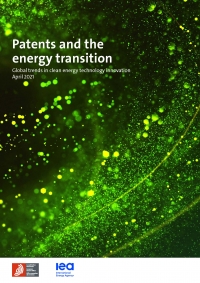IEA: Patents and the Energy Transition: Global trends in clean energy technology innovation - April 2021 - eng (pdf) Избранное
Aimed at decision-makers in both the private and public sectors, this report is a unique source of intelligence on the innovation trends across the energy system, in particular low-carbon energy (LCE) technologies. It draws on the latest information available in patent documents and the combined expertise of IEA analysts and EPO examiners. It is based on an updated international classification of low-carbon innovation that provides a widely used standard for consistent and robust analysis of patents for technologies contributing to climate change mitigation.
Trends in LCE innovation have never been more important to policymaking. Not only do climate change goals demand urgent and informed strategic decisions about innovation, but investment in new technology fields has taken centre stage in proposed recovery plans to combat the impacts of the COVID-19 pandemic (IEA, 2020b). In addition, concerns about the demands future clean energy technologies might place upon critical mineral supplies have assumed strategic global importance. Patent data can help inform governments about their comparative advantage at different stages of a technology's value chain and shed light on innovative companies and institutions that may be in a position to contribute to economic recovery and long-term sustainable growth.
The data presented in this report show trends in high-value inventions for which patents have been filed in more than one office. 3 Patent information provides robust statistical evidence of technical progress. Companies and inventors make use of the temporary exclusivity conferred by patent rights to market their innovations and recoup their research and development (R&D) investments. The data highlight the LCE fields that are gathering momentum and the cross-fertilisation taking place. In this way, it also provides a guide for policy and business decision-makers to direct resources towards value creation in energy transition.
Дополнительная информация
- Серия: Международные организации / IEA / Special Reports
- Год: 2021
- Месяц: 4
- Источник: IEA


































